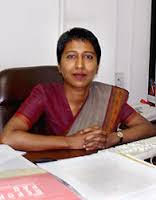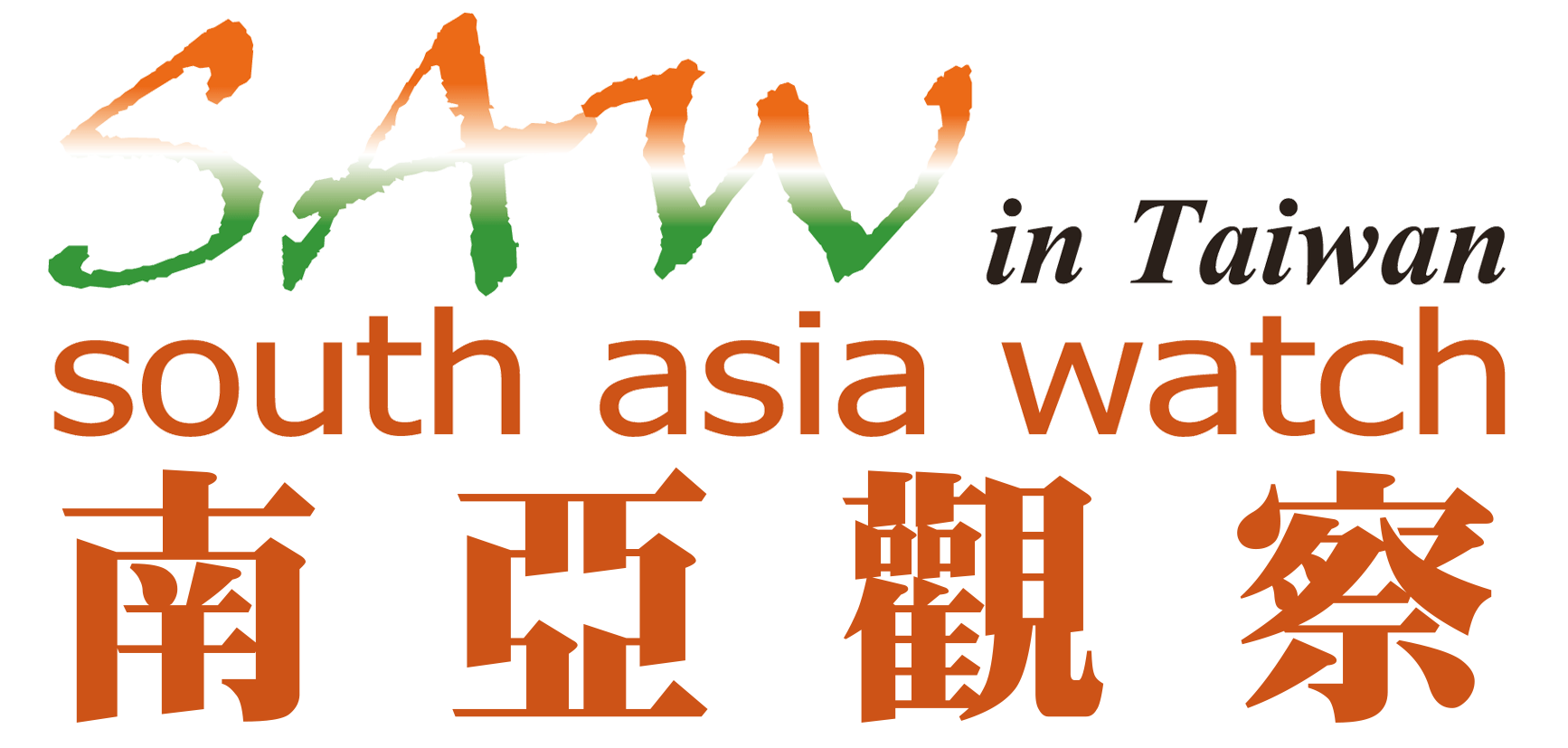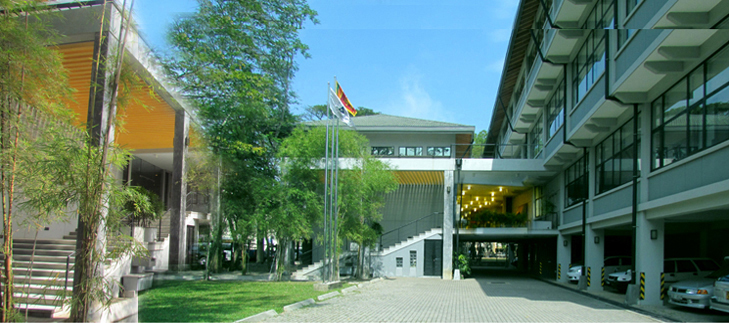陳牧民/E.Perera/黃捷歆
斯里蘭卡的政策研究中心(Institute of Policy Studies, IPS)曾被評選為亞洲排名24的智庫,也是該國最知名的研究機構之一。本文作者專訪副執行長Dushni Weerakoon博士,討論斯國內戰前後的發展狀況與面臨的困境,包括社會與教育制度、人力資源發展與外資進入等議題。
 Interview with Dr. Dushni Weerakoon, Deputy Director of IPS
Interview with Dr. Dushni Weerakoon, Deputy Director of IPS
January 29, 2015
陳牧民(中興大學國政所)採訪
Emesha Perera(可倫坡大學經濟系)整理
黃捷歆(中興大學國政所)翻譯
問:請簡介斯里蘭卡政策研究中心?
IPS是由國會設立的,曾隸屬於財政部,我們行政及財務上都是獨立的。目前機構內有三十名研究員。雖然裡面有財政部的成員,但我們只有百分之十的預算由財政部資助,其他部分靠自己,大部分都來自外部。因為我們與發展夥伴共同合作,長期下來我們建立一定的關係能獲得贊助。我們近期的目標為經濟獨立,我們一開始受荷蘭政府資助而成立,2004年關係終止。我們專注於社會經濟政策,包括農業、貿易、貧窮、勞工及教育等領域。我們透過研究發現來影響經濟決策,也常舉辦與政府官員及私人部門的座談會。
問:斯里蘭卡有具體的發展戰略嗎?
若你看1970年代晚期的斯里蘭卡發展戰略,我們是相當開放的經濟,主要是因為我們在1977年及1978年間開始改革。第二波的改革在1990年及1991年間開始。1997年及1998年,或者是1996年及1997年,我們歷經相當強大的私有化歷程,但之後便沒有什麼作為。
問:是因為內戰嗎?
我不認為全部都因為內戰。決策者自然會因為戰爭的緣故而聚焦於政治層面。我想也可能是因為改革不受歡迎,要說服人民經濟改革對他們是有益的,這件事很難。如果回頭看1977、1978年的改革,那是爆炸性的改革方式,經濟處於十分糟糕的情況。政府擁有多數選票支持,所以他們能開始改革。另一個問題在於我們並沒有發展戰略,也從未高度工業化。改革一直以來都很單面向,沒有去正視整體的經濟議題。
問:這是因為國家想維持某種社會主義式的福利系統嗎?
若你去看這個國家的名稱,它依然是「斯里蘭卡民主社會主義共和國」。社會主義的精髓、福利國家仍然深植在我們的思想中。如果要推動改革,任何政治領導者掌權者都必須面對左派人士,他們或許因為在國會席次不多而顯得不強,但他們能讓人民走上街頭。我們還有工會,工會的力量非常強大。他們可能傾向不同政黨,但當政府試圖改革公部門,或推動任何的國家企業私有化時,他們會上街頭抗議。 類似的情況出現在2011年,前任政府試圖在免費教育系中部份開放私人投資,還起草了法案,但大學生和教授們都反對,認為應當保障免費教育,於是政府只能撤回法案。要推動改革非常困難,但這並不表示我們無法推動工業化。我們無法推動工業化,主要是歸因於戰爭。我們本土資源有限,若談論到實際的工業化推動,就需要大量外來投資,而我們不能期待陷入內戰三十年的斯里蘭卡有這種的投資。
問:戰後情況有改善嗎?
當然,情況有改善。但我想斯里蘭卡已經失去了三十年前我們開始自由化的相對優勢,現在許多國家跟斯里蘭卡的經濟一樣開放,我們勞工成本和其他南亞國家相比甚至比較高。和印度及孟加拉相較,我們勞工成本相當高。我想巴基斯坦和我們的狀況差不多。而且我猜競爭對手大多來自越南、寮國、柬埔寨等國。所以斯里蘭卡並未與任何區域性供應鏈有所連結。對我們來說,要突破生產困境必須擁有相對優勢。雖然我們擁有地理位置的優勢,但其實那不太重要。最近的四、五年我們觀察到外來直接投資增加的趨勢。但主要是做發展計畫、大型集體公寓、購物中心及遊樂設施。
問:如何吸引國外遊客呢?你們有具體策略嗎?
前任政府試過要發展觀光業,休閒部門及相關產業。他們針對某項目設定2016年遊客量達到兩百五十萬人次,但觀光客不僅為海灘而來,也為了零售購物、賭博、高爾夫及商業性質的觀光,類似泰國與新加坡。斯里蘭卡有許多觀光景點,有海灘,歷史建築,也是世界最多生物物種的國家之一。
問:我們也注意到斯里蘭卡設置了一連串工業園區及出口加工區。他們如何運作?
我們有許多工業園區,但其實沒有在運作,只有一些出口加工區正常運作,偶爾會存在些優勢。大體而言,雖然在出口加工區能拿到關稅優惠,但你也能在國家其他地方獲得。出口加工區的設立和關稅優惠綁在一起。現在整個島嶼都能獲得關稅優惠。而基礎建設,不管是能源、運輸等方面也漸漸地在進步。至於人力,我們還有很大的差距。外國投資者,甚至是私人部門,都會說他們找不到想要的技術勞工。
問:但你們有很高的識字率,這代表斯里蘭卡能提供高技術勞工不是嗎?
如果你以大局來看,斯里蘭卡最大的限制就是技術。縱使我們擁有高識字率,但斯里蘭卡人口老化迅速。從1930年代起,我們開始提供免費教育與健康服務,達成較高的發展指標,平均壽命等。到現在,勞動力數量在下滑。我們的失業率是4%。但如果你去看圖表,受教育的年輕人失業率在17%左右。我們的成長倚賴未來的勞動力表現,但我們幾乎沒有工程師,數學家,資訊科技技術人員,英語專業人員。我們大學生大致上都念文科。若你和私人部門談,他們會說勞工最大的限制是語言隔閡。即使我們有最初的優勢,但我們並未持續改變。以教育為例,教學方法還是以做筆記為主,這對分析與問題解決技巧毫無幫助。
問:所以大學教育系統的必須改革?
是的,斯里蘭卡的失業率很高。三年前政府召集所有失業的研究生。有些畢業生擁有優先權,但公部門早已人滿為患,光是人事費就佔政府預算的一大部分,公務人員退休金也是沉重的負擔。然而,由於一些政治考量,政府很難改變退休金制度。近期內私部門終於被允許進入高等教育。另外有許多附屬於國外大學的學校卻沒有品質保證,所以私有化法案除允許與私部門合作之外,更引進常規機制來控管品質。在斯里蘭卡,22歲到24歲的年輕人僅有7.5%進入大學與技職學校。
問:誰是斯里蘭卡最主要的投資者?
斯里蘭卡最主要的投資集中於服務部門,像是飯店及觀光業。電信通訊業有一家,而資訊科技部門有幾個。斯里蘭卡為國外客戶提供的IT服務還算有優勢。還有一個案例是金融服務外包給斯里蘭卡當地公司。然而一和印度比較,我們的科技資訊人才還是不夠。韓國和日本的投資並不多。檢視國外直接投投資數據時,會看到國外投資多數來自香港。當我們開始做出口加工時,受到配額限制的香港製造商就在這裡投資在服裝部門,成為服裝業主要的布料供應商。所以外資的型態跟印度不同,在斯里蘭卡的外資以服務業為大宗。印度在這裡的投資很多元,而日本則是提供進口及雙邊援助。
問:中國投資的部分呢?
他們並不是在投資,而是借貸給我們,只有可倫坡海港城計畫是國外直接投資計畫。中國的國外直接投資由政府支持,而非來私人。未來可能會有中國的私人投資。印度與斯里蘭卡已簽訂許多貿易協議,包含貨物、服務及投資;新協議早在2008年就該簽訂,但斯里蘭卡政府想要一些改變。
問:你覺得是否該有個策略以突破停滯期?
我們認為前任政府為改善基礎建設所做的努力是明智的決定,但問題在於對於外來金源的依賴,也造成斯里蘭卡將面臨某一部門的崩盤,除非其他部門的發展能避免這個問題。我很強調技術層面的改善,它包含教育系統及公部門的改革。我們的國營企業虧損,政府的收入僅占國民生產毛額的11%。我們過度倚賴外援資金。其次,我們需要勞工市場改革,目前的聘僱及解僱法令很嚴格。
問:誰會負責新政府的經濟政策?
似乎是首相。但現在這時刻,政府每天都要通過上百個計畫。所以真正主導經濟政策者只能在國會選舉後產生。而我們也不清楚誰有機會掌權。我們知道統一國民黨(UNP)及拉賈帕抗薩(Rajapaksa)團隊的經濟政策,但我們不知道斯里塞納(Sirisena)的經濟政策或經濟思想。斯里蘭卡的案例和印度很像。莫迪(Modi)現在正在印度推動的工作,也許是斯里蘭卡未來規畫的參考。(編按:受訪時間在斯里蘭卡總統大選後二周,故政策方向與決策機制尚未明朗)
(訪問原文)
Interview with Dr. Dushni Weerakoon, Deputy Director of IPS
January 29, 2015
Q. Please tell us about Institute for Policy Studies of Sri Lanka.
IPS is set up by an act of parliament, were being under the Ministry of Finance until two weeks ago. But we are admistratively and financially independent from government. Currently there are 30 researchers.
Although we have government treasury members, we are self-funding we get only 10 percent of our budget from treasury. 90 percent we find by our self. Mostly from outside, because we do collaborative work, with development partners, overtime we have built some relationship to get some funds Recent for were seeking financial independence, we first set up by funds from Nederland government. But in 2004, that was ceased.
We solely focus on socio- economic policies. We have captured many areas such as agriculture, trade, poverty, labor, education etc.
Our mandate really is to influence the Economic policy making, and we do that through our research findings. We often host meetings with the government officials and also with private sectors.
Q. Does Sri Lanka have a concrete development strategy?
If you look at the development strategies in Sri Lanka from late 1970s, we were fairly an open economy, mainly because we started reforms, which started in 1977/1978. In 1990/1991 what we call second wave of reform. In 1997/1998 or may be 1996/1997, we had a fairly sort of a strong privatization process. If we look beyond that period, nothing really could be seen.
Q. Was it because of the civil war?
I don’t think it was entirely because of the war. Because of the war to the extent that policy makers, their attention was focused on political side. I think it is also because of reforms are not a very popular sort of, it is very difficult to convince your general population that the economic reforms are good for them. If you look at the 1977/78 reforms, it was a big bang approach to reform, the economy was in a very bad shape. The government came to power with support of majority votes, so they could start it. Another problem is that we did not have a development strategy, and we never had strong industrialization. It was always some sort of ad hoc reforms that never tackled the economy in the holistic level.
Q. Is that because this country always tries to maintain some kind of socialist welfare system?
If you look at the name of the country, it is still “Democratic Socialist Republic of Sri Lanka”. The whole notion of socialism, welfare state still very much embedded in our thinking. If you were to push reforms, any political leader, any government, has to come up against left parties, they may not be very strong in terms of their presentation of parliament but they can put crowds on the streets, in to the streets, then we have trade unions, Our trade unions are very strong. They may be aligned to different parties, but when you try to institute public sector reforms, if want to privatize any state office, they will get on to the streets.
Similarly, in 2011, previous government tried to introduce some limited attempt to allow private investments in Sri Lanka’s free education system and they brought a bill but university students, university lecturers, all opposed it saying that free education is a guarantee then the government pulled it back. So to push through a reform effort is very difficult, but that is not to say that, we cannot push through industrialization. In that case, I think that to a large extent, why we have not had a strong industrialization strategy, of course, is because of the war. As you know, we have a limited domestic resource base, if we are talking about a real industrial push we need to have large volumes of foreign investments and with 30 years of war we cannot expect such kind of investments in Sri Lanka.
Q. Did the situations improve after the war?
Yes, situation has improved. But I think that Sri Lanka has lost the comparative advantage that we had 30 years ago when we initially liberalized , now every other countries has opened as Sri Lankan economy is, our labour costs are very high compared to even some of our South Asian countries. Compared to India and Bangladesh our labour cost is very high. I think Pakistan is somewhat similar to us. And I think competitors are more from Vietnam, Laos, Cambodia etc. So Sri Lanka is not linked with any regional value supply chain, and for us to break in manufacturing in a big way we need the comparative advantage. Though we say that we have an advantage in geographic location, but the location doesn’t matter so much.
In last 4-5 years we have seen an increase in foreign direct investments. But they have come in to development projects, condominium, shopping malls, and leisure sort of things.
Q. How do you attract other foreign visitors? What concrete strategies do you have?
The previous government attempted to develop tourism, leisure sector and all those lines. They have targeted some kind of tourist arrivals to be increased to 2.5 million by 2016, but these tourists come not only because of the beaches sort of all of that but coming for retail shopping , gambling, golf, business tourism. They were kind of modeming it. Somewhat similar to Thailand and Singapore. For tourism Sri Lanka has a lots more to offer. In Sri Lanka we have beaches, some historical places and we are one of the most bio diverse countries in the world.
We also noticed Sri Lanka has set up a number of industrial parks and Export Processing Zones (EPZ). How did they perform?
We have many Industrial parks but they are really not working. But some of the export processing zones are okay and occasional advantages are there. But by and large whatever the tax concession that you can get by being in an export processing zone, you can get from being in anywhere in the country. The EPZ, when they are first set up, were linked to tax benefits. Now in all island you can get them. And infrastructure has improved slowly over time, whether it is energy, transport etc. I think a long way to come, when it considers labour. If you talk to foreign sector, even private sector, they would say they cannot find skilled labour that we want.
Q. But you have a high literacy rates, which mean Sri Lanka can offer high skilled labors, right?
But if you cross the board, what is the main constrain in Sri Lanka‘s growth, that is skills. Though we say that we have high literacy rate, in Sri Lanka there is a rapid aging population. Because from 1930s we had free education, free health and we have achieved high development indicators, life expectancy all of that. For even now, the entrance for the labour force numbers are falling. We have unemployment rate of 4 percent. But if you look at figures, educated youth unemployment is around 17 percent. Our growth depend on how productive our labour force going to be in the future. We have very few engineers, mathematicians, IT skilled people, people who skilled in English. Bulk of our university entrants are for the Arts stream. If you talk to private sector they would say that biggest drawback of the labour is Language barrier.
Although we had some initial advantage, we did not reform and keep changing. If you take the education system, teaching methods are still based on taking down notes. It is not to develop analytical and problems solving skills.
Some reform in University Education System is necessary?
Yes, In Sri Lanka Graduate Unemployment rate is high. About three years ago , government recruited all the unemployed graduate as and they were not used productively. Some graduates have first class. Public sector is already overcrowded. Public sector wage bill along comprises a significant portion of government budget. Pension scheme of the public sector employees is also a heavy burden of the budget. However it is also difficult to the government to reform pension scheme because of some political reason.
Only recently private sectors are allowed to enter high education. There are so many collages affiliated to foreign universities however there is no quality assurance. So the Privatization Bill not only allow private sector participation but also introduce regulatory mechanism to control the quality of them. In Sri Lanka inly 7.5% of youth between 22- 24-age groups attend universities and vocational training colleges.
Q. Who are main investors Sri Lanka?
In Sri Lanka most of the investments are in service sector. Most of them are in the hotel and tourism. There is one in Telecommunication and some in IT sector. Sri Lanka has an advantage in that sector even some local companies provide IT services for foreign customers. One example is that financial services are outsourced to Sri Lanka. However when compared with India we did not have enough IT graduates
There are no many investments from Korea and Japan. When we look at FDI statistics, our foreign investments are mainly from Hong Kong. When we started our export processing, producers in the countries like Hong Kong had quota restrictions. So they came and invested in the garment sector here. They are the main suppliers of fabrics for the garment sector. Unlike in India FDI here is mainly in service sector. India has diversified their presence here. Japan is a source of imports and bilateral aid.
Q. How about Chinese investment in this country?
They are not investments. But loans except the Colombo port city project that is FDI. Chinese FDI are backed by the government not by the private sector. Some Chinese private investments may come in the future. But India and Sri Lanka have many trade agreements to include goods, services and investments and however new agreement was supposed to singed in 2008 but the government of Sri Lanka wanted some changes.
Do you think there is a strategy for this country to come out from stagnation?
We have always said what the previous government did to improve infrastructure was sensible thing. But the problem was they were relying on external financing to do that.
Because of that at some point that Sri Lank will face a kind of a crash unless development in other sectors does not follow. I emphasize the skill factor that has to be improved. That include education systems reforms, public sector reforms. We have loss making public enterprises government revenue is also just 11 percent of GDP. Because of we relying raising funds from abroad. Secondly we need labor market reforms, we have strict hiring and firing laws here.
Q. Who is in charge of economic policies of the new government?
It seems that it is in the hands of the Prime minister. However at the moment government is adopting 100 day program. So the real face of the economic policy may be found only after the parliamentary election. And it was not clear who would come to the power in the election. We are aware of the economic policies of the UNP and the Mahinda Rajapaksha Grope and we do not know the economic policies or the economic ideology of the Mithripala Sirisena. Sri Lankan case is somewhat similar to India. What Sri Lanka could do is in the future what Modi is trying to do in the India.

